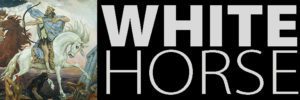Last week a number of interesting commentaries appeared from unexpected quarters. Two in particular noted the speed with which His Holiness seems to be practically skipping down the merry ole #SchismaticWay with the most recent appointments, especially Tucho “Heal me with your Mouth” Fernández and Slim Jim “Bridge to Hell” Martin.
These two commentaries both made mention of the infamous Greek term katechon, referring to II Thessonians in which the Blessed Apostle speaks of the coming reign of Antichrist and the katechon, the “restrainer” who holds him back.
The first to use the term was Sandro Magister in his analysis:
“The death of his predecessor Benedict XVI, at the end of 2022, was for Pope Francis like the passing of the “katéchon,” of the restraint that held him back from fully revealing himself.
“Revealed himself” is another reference to II Thessalonians where the katechon is restraining the revealing of the Antichrist.
The consistory appointments Magister says, are consistent with the bent of His Holiness on promoting his progressive agenda, and snubbing all his enemies.
“But the most striking appointment is not that of the Argentine Victor Manuel Fernández (in the photo) as cardinal, seen as a matter of course, but the previous assignment to him of the post of prefect of the dicastery for the doctrine of the faith.
“Here in fact Francis has done what he would never have dared to do while Joseph Ratzinger was alive. That is, the appointment in the key role that belonged to the great German theologian and later pope of a figure who is his complete opposite.
Meanwhile Peter Seewald, biographer of Pope Benedict had this to say to kath.net as posted on Rorate:
Seewald: [T]he latest developments point to a real breach of the dam. And in view of the dramatic decline of Christianity in Europe, this could turn into a flood that destroys what has still held out.
kath.net: A strong word.
Seewald: The latest news from the Vatican reminded me of an essay by Georgio Agamben that has become famous. In his text on the “Mystery of Evil,” the most discussed philosopher of our time brings Benedict XVI into play. As a young theologian, Ratzinger once distinguished between a church of the wicked and a church of the righteous in an interpretation of Augustine. From the beginning, he said, the Church has been inextricably mixed. It is both the Church of Christ and the Church of the Antichrist. However, according to Agamben, there is also the idea of the katechon…
kath.net: I beg your pardon?
Seewald: With regard to the 2nd letter of the apostle Paul to the Thessalonians, this means the principle of stopping. A term that is also interpreted as “hindrance”, for something or for someone who stops the end of time. Benedict XVI had been something of a “restrainer,” Agamben said. Against this background, his demission inevitably evoked a separation of the “beautiful” from the “black” Church, that span in which the wheat is separated from the chaff. A steep thesis. But the pope emeritus apparently saw it similarly. He had to stay on, he answered my question as to why he could not die. As a memorial to the authentic message of Jesus, as a light on the mountain. “In the end, Christ will be victorious,” he added.
So according to Seewald, Pope Benedict as Emeritus saw himself as some sort of katechon holding some flood of evil back, which is implying the Antichrist by the very use of the term.
Read more at: onepeterfive.com
